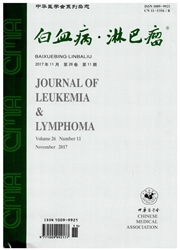

 中文摘要:
中文摘要:
介绍第56届美国血液学会(ASH)年会关于骨髓增生异常综合征(MDS)和再生障碍性贫血(AA)患者进行异基因造血干细胞移植的时机选择的报道.同种异体造血干细胞移植(HSCT)治疗MDS是疾病治愈的有效途径,但病死率也很高.对于低危和中危-Ⅰ MDS患者,应尽量延后HSCT的应用时间.但是对中危-Ⅱ和高危MDS患者,在确诊后应尽快进行HSCT,其生存期明显优于延后HSCT的患者.HSCT前的预处理方案可以选择阿扎胞苷、白血病形式的诱导化疗或联合以上2种治疗.HSCT已被证实可以治愈重型AA,但新诊断的患者中HLA相合的同胞供者仅占1/4.总之,HLA匹配的相关和无关供者HSCT会成为大多数高危MDS和初发重型AA的治疗选择.
 英文摘要:
英文摘要:
New progresses of timing of allogeneic hematopoietic stem cell transplantation (allo-HSCT) for myelodysplastic syndrome (MDS) and aplastic anemia in the 56th ASH annual meetings were reviewed.Allo-HSCT for MDS was a potentially curative procedure,but it was associated with a significant risk of morbidity and mortality.With the recent approval of disease-modifying agents,the appropriate timing of alloHSCT needed to be addressed.For low and intermediate-1 IPSS risk groups,the decision to delay HSCT from the time of diagnosis maximized overall survival.For patients with intermediate-2 and high-risk disease,immediate HSCT at the time of diagnosis was associated with a greater number of life-years than HSCT at a delayed time point.The methods that underwent HSCT were after azacitidine,leukemia-type induction chemotherapy,or both.for severe aplastic anemia (SAA),HSCT was a proven cure,but HLA-matched sibling donors were found in fewer than 25 % of newly diagnosed patients.The use of early unrelated donor HSCT was an evolving concept that will became more accepted as improvements in HSCT outcomes continued.Moving forward,HLA-matched related and unrelated donor HSCT will likely become the treatment of choice for most patients with higher-risk MDS and newly diagnosed SAA.
 同期刊论文项目
同期刊论文项目
 同项目期刊论文
同项目期刊论文
 期刊信息
期刊信息
